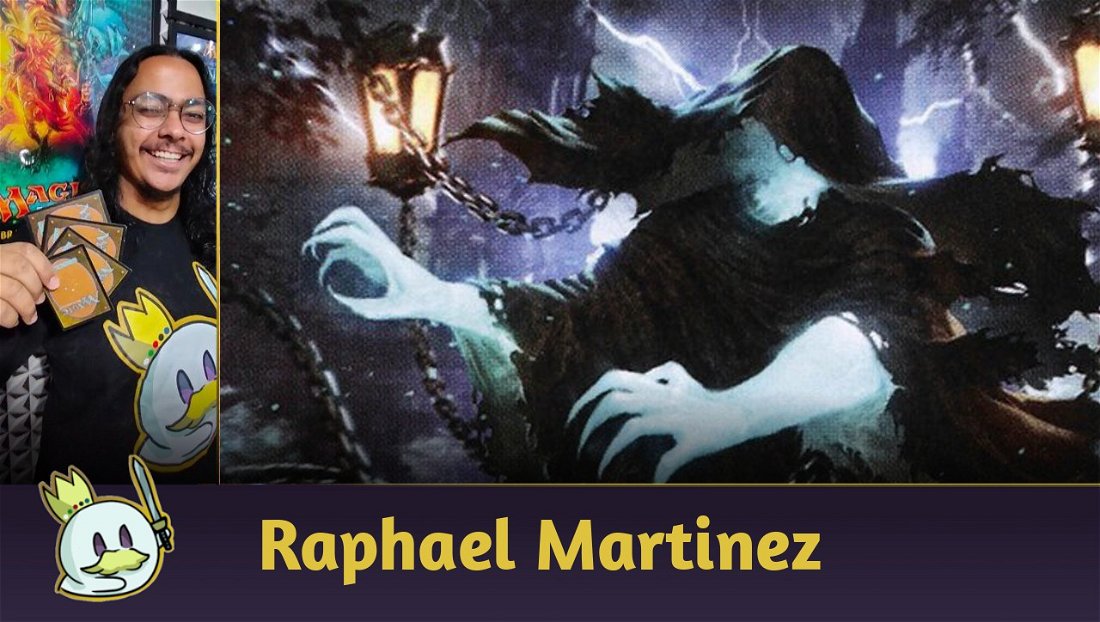The most anticipated card and promising card for Pauper on Double Masters 2022 is definitely Monastery Swiftspear. After all, the creature originally released in Khans of Tarkir, in 2014, has a long history in all formats in which it was present and is still considered a staple of the most varied strategies in Pioneer, Modern and Legacy.
But how exactly can we apply its potential in Pauper? What decks will it best serve as an aggressive one-drop with strong growth potential?
These are the questions I intend to answer within this article.
Understanding Monastery Swiftspear

Monastery Swiftspear has, for years, been ranked as the best red one-drop in the game for its potential to exert an absurd amount of pressure as you progress your game and keep the board clean. Basically, every non-creature spell you cast with it on the battlefield does one more point of damage to the opponent, making it difficult to do a trade math against other creatures or defining how comfortable they can be not blocking it.
Due to haste, Swiftspear is not exactly a bad topdeck on an empty board if the opponent has spent its resources removing your creatures, but it is a terrible draw if they have a superior board with good blockers since, even with a spell in your hand, her 2/3 body will hardly survive combat.
If we look at the reactive spectrum, Swiftspear trades pretty well with a significant portion of low-cost drops if you only cast one spell. And if, by chance, your spell is a Lightning Bolt or similar, you can deal with threats of up to 5 toughness in a 2-for-1 trade, or destroy a 2/2 and still deal some damage to the opponent, or filter your hand if the spell is an Instant-Speed cantrip.
Such qualities made this creature deserve space in the most varied archetypes: Burn, Mono Red Prowess, Boros Heroic, Izzet Delver and Death's Shadow. And what all these strategies have in common is that they are mostly proactive.
I'm using Legacy's Izzet Delver as an example as one of the most talked about topics about Swiftspear's downshift is the possibility of creating an Izzet Tempo with her, Delver of Secrets and other low-cost creatures, looking to use spells like Counterspell for protection, and while it is very useful and help prevent the opponent from doing many things, this card interacts negatively with her and other recurring threats from these archetypes — it doesn't mean you can't run Counterspell, but it's counterintuitive with what Monastery Swiftspear sets out to do.
Of course, the Legacy version had Force of Will and Daze, but not only did it also have Sprite Dragon, but they were free spells and a necessary evil to deal with existing unfair strategies. In Pauper, you may need cheap options to avoid explosive plays or removals like Spell Pierce or Dispel, and you can also turn to Izzet Charm, which has as much proactive and reactive functions, but I wouldn't consider putting Counterspell in a deck where my one-drop is Monastery Swiftspear.
In many ways, playing this new creature will remind us of how to play Kiln Fiend or Seeker of the Way — in fact, they will likely accompany her on this journey through the Pauper universe.

Finally, another essential point is to understand that, unlike Kiln Fiend, Monastery Swiftspear should never be your main threat, it is a complementary addition to something your list already proposes and rewards you by giving it a more aggressive clock. And in that sense, it's closer to Seeker of the Way, where it works as a means to an end for decks like Boros Synthesizer or Mono-White Heroic, but it's never going to be exclusively the threat that wins the game on its own most of the time,
Now that we understand how the card works, why it deserves so much attention, and how to avoid building decks around it, let's look at what archetypes or strategies it might fit into. But before we talk about the lists, I would like to point out that they are intended to serve as a starting point for developing ideas with the new card, and not exactly as definitive lists with the right adaptations for the Metagame, and you can change them as you see fit.
Mono Red
The obvious home all players considered for Monastery Swiftspear initially was in Mono-Red strategies, especially Burn and Mono Red Blitz.
Mono Red Blitz
Mono Red Blitz has been doing well in tournaments over the last few weeks (including winning the latest Pauper Challenge), going from being a meme to becoming a real competitor in the format thanks to the inclusions of creatures like Festival Crasher in Midnight Hunt and for the extra reach provided by Reckless Impulse — the Light up the Stage we deserve.
Now with Monastery Swiftspear, I believe the need for Burning Prophet or Kessig Flamebreather no longer exists and allows us to play something closer to what Mono Red Prowess did in 2019's Modern, and the mix of protection with Mutagenic Growth and Apostle's Blessing alongside damage spells and “free spells” like Manamorphose and Lava Dart definitely makes it possible for any creature of the list becomes a threat, and Swiftspear also adds more consistency to quick turn 3 kills with the right sequencing.
This is the archetype that you should most expect to face in the coming weeks.
Burn
Another version we'll see often is Burn because Monastery Swiftspear fits this strategy perfectly in all formats it's legal, and in Pauper it's especially lethal as not only do we have the full set of Lightning Bolt variants, we can also count on Fireblast.

For practical purposes, you might consider Swiftspear a Thermo-Alchemist for one mana that doesn't need to spend a full turn to do absurd things. When you play it on turn 1, all your subsequent spells will deal 1 more damage as long as the opponent has no blockers, in addition to the potential turn 3 kill that relies on your spells' redundancy to function on more than one occasion.
Gruul
Gruul Stompy
Much like Mono-Red Blitz, I decided to build and test a few times a Gruul version, especially due to Might of Old Krosa.

Many people would be happy with a Become Immense downshift to Infect and Kiln Fiend decks, but I think that for both cases, Might of Old Krosa is much more efficient in Pauper standards and, in relation to Kiln Fiend, Infect's historical staple allows for a 3-card combo with Temur Battle Rage.

Green also offers good sideboard options and protection, such as Snakeskin Veil and Vines of Vastwood. I don't think it will be as successful as the Mono Red versions, but the alternative of having an easy combo with Kiln Fiend and making any creature you own a threat with Temur Battle Rage and Might of Old Krosa might work in the right Metagame.
Izzet
Izzet Tempo
Izzet is one of the most exciting combinations to play with Spellslinger strategies in Magic: The Gathering and has a long history in Pauper, especially with Izzet Blitz.

As already mentioned, Izzet Charm is another very relevant addition because all of its abilities are useful in the format, as there are still many creatures that die to a Shock, while a Spell Pierce deals with decks that seek to maximize their mana to gain card advantage by casting Deadly Dispute and the like.
On my list, I chose to go a classic line with Delver of Secrets as everyone wants its comeback — something that I, personally, don't see as viable because Delver has become a relic from other times and doesn't quite fit in the current Metagame — while trying to keep the mana curve extremely low to take advantage of my cheap cantrips and removals.
You can choose to go less along the Blitz line to remove Kiln Fiend and Mutagenic Growth in exchange for other creatures or more removals, as you can also choose to play with other threats like Jeskai Elder, or go even deeper into that line and bet on Manamorphose and other spells instead of interaction, like DracV_ pauper_b did with his decklist.
Boros
Boros has some of the most efficient non-creature spells in Pauper, and has a long history with Seeker of the Way. Soon, we'll probably find some homes for Monastery Swiftspear in this combination.
Especially if we want to enjoy another new addition that Double Masters 2022 has brought to the format.
Boros Heroic
Created by carvs, but with a slight adaptation since he's running an interesting tech that I particularly prefer him to show to the world himself, Boros Heroic has been considered since the reveal of Tenth District Legionnaire's downshift.

Tenth District Legionnaire goes hand in hand with Monastery Swiftspear in Pioneer's Heroic, and carvs tries to follow the same pattern on Pauper, where he trades the Mono-White variant's speed for a more stable but still explosive game with Temur Battle Rage.
With Ancestral Anger, Reckless Impulse and Faithless Looting, in addition to Tenth District Legionnaire's scry, Boros Heroic manages to stay in the game even when its first threats are answered, which proves difficult when having access to Emerge Unscathed to protect them from removals.
Time will tell if this variant will be more successful than Mono Red Blitz or if it really has the potential to enter the competitive scene, but with the inclusion of two great red creatures, tests are more than mandatory to reach a conclusion.
Boros Synthesizer
Another reasonably obvious inclusion for Monastery Swiftspear is in the Kuldotha Boros (or Boros Synthesizer) shell, where it allows for more aggressive openings that add even more to the “aggro” spectrum alongside Seeker of the Way.
We all know how many matches Boros Synthesizer can only win if it manages to go to the race and win before the opponent stabilizes. This is the exact proposition that Swiftspear seeks to deliver and the artifact base, flexible removals and Kuldotha Rebirth offer several Prowess triggers, not to mention reusing them with Kor Skyfisher.
I had doubts about where to put Monastery Swiftspear on this list and ended up opting to remove Glint Hawk (which might be a huge mistake) since we still need at least twelve artifacts to sacrifice with Kuldotha Rebirth, trigger Metalcraft and return to the hand with Kor Skyfisher — and if my purpose is to play faster, I don't want to have a creature that will commonly need a setup before.
Rakdos
When I started to build some Rakdos lists, my focus was on a deck that I used frequently between 2017 and 2018, which was an adaptation of Rakdos Monarch, a Black-Based variant very famous in Brazil at the time, but more geared towards spells and removals as I created a fast clock with Kiln Fiend and Gurmag Angler.
What I was trying to emulate with Rakdos Fiend was basically the same proposal that Jund Death's Shadow had in comparison to traditional Jund: I traded a proposal to drag the game to later turns and win by overwhelming card advantage for an explosive early game with Kiln Fiend, using it not as a combo piece (although I could still sequence two spells + Temur Battle Rage to victory), but as a quick and efficient threat at a time when having the Monarch and lots of 2-for-1 effects coupled with low-cost spells were a big plus. This made my game against other Black-Based worse, but there were so many decks that needed a setup to work that removing a key piece with Duress and following with Kiln Fiend + removals was usually enough to end the game before the opponent could recover.
But times have changed, and it doesn't seem to make sense to adapt this list for 2022's Pauper, where Gurmag Angler has gone from being the monster it once was, Snuff Out has become a staple and most decks will simply ignore a Duress in the first few turns because there is so much card advantage to accumulate that a measly discard no longer makes a difference.
If we want to go down a Rakdos route, we need to consider what this combination looks like in the current format, and of course, that would take us all the way to Deadly Dispute — and eventually to Affinity.
Rakdos Affinity
Affinity's current version has various non-creature spells that can be harnessed with Monastery Swiftspear while the rest of the deck acts on its own, creating a more aggressive stance, and I even tried to fit Lightning Bolt, but it's unnecessary with Galvanic Blast and Makeshift Munitions.
Like Boros Synthesizer, playing Swiftspear in Affinity doesn't mean needing to rush her on turn 1 (but you can if your hand allows), but looking to take advantage of her triggers when you have spells to cast, and with 22 draw sources, you won't lack useful features that can speed up the clock with it.
I don't know how far going full-Rakdos and taking advantage of Monastery Swiftspear and Experimental Synthesizer is a better option than the Grixis variants, but the possibility of including it as a new aggressive drop in Affinity that takes advantage of the current build the archetype currently has is worth considering.
However, Affinity is extremely synergistic, and it doesn't contribute anything to its synergies, a problem that can also drive it away from the other viable option.
Rakdos Burn
As with the Mono Red version, Monastery Swiftspear fits perfectly into fast-damage strategies and Rakdos Burn falls into that category, with a much greater reach for longer games than the monocolored variant.
However, everything in this archetype is very synergistic and works around the same mechanic: discarding things to cast them with Madness and turning Faithless Looting or Blood tokens into true card advantage engines — an objective in which Swiftspear doesn't interact with absolutely nothing.
However, with only 8 to 9 creatures, I believe in the possibility of testing its inclusion in this archetype, and I opted for the Kitchen Imp slot, but we can also remove Chain Lightning, since I expect many red deck mirrors in the future, and the creature from Modern Horizons II can fly over Affinity and interacts better with the list's objective.
Conclusion
Monastery Swiftspear will definitely bring something new to Pauper and could be the centerpiece for yet another change in the format's competitive Metagame. The possibilities with her are endless, and her attributes are precisely what we need to speed up games and put pressure on strategies that take too long to create their setup.
I don't believe it has the potential to break the Metagame, as archetypes like Mono Red Blitz and Burn, which seem to be a concern for players, have weaknesses that are easy to take advantage of from the first few turns — and if people are adding 4 Dust to Dust and 3 Revoke Existence to deal with Affinity, I suppose we can make some concessions and space for Hydroblast, Lone Missionary, Weather the Storm, among others.
But we've also reached a point where a Skullcrack downshift, or any similar effect that prevents lifegain, is no longer a viable option for Pauper because, with such an efficient one-drop, Burn and other red decks need to have this elementary and exploitable weakness in most colors, so they don't become a problem in the future.
Thanks for reading!













— commentaires 0
, Réactions 1
Soyez le premier à commenter